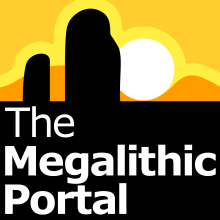In 1943, British archaeologist Bernard Fagg received a visitor in the central Nigerian town of Jos, where he had spent the previous few years gathering and classifying ancient artifacts found on a rugged plateau. The visitor carried a terracotta head that, he said, had been perched atop a scarecrow in a nearby yam field. Fagg was intrigued. The piece resembled a terracotta monkey head he had seen a few years earlier, and neither piece matched the artifacts of any known ancient African civilization.
Fagg, a man of boundless curiosity and energy, traveled across central Nigeria looking for similar artifacts. As he recounted later, Fagg discovered local people had been finding terracottas in odd places for years—buried under a hockey field, perched on a rocky hilltop, protruding from piles of gravel released by power-hoses in tin mining. He set up shop in a whitewashed cottage that still stands outside the village of Nok and soon gathered nearly 200 terracottas through purchase, persuasion, and his own excavations. Soil analysis from the spots where the artifacts were found dated them to around 500 B.C. This seemed impossible since the type of complex societies that would have produced such works were not supposed to have existed in West Africa that early.
But when Fagg subjected plant matter found embedded in the terracotta to the then-new technique of radiocarbon dating, the dates ranged from 440 B.C. to A.D. 200. He later dated the scarecrow head—now called the Jemaa Head after the village where it was found—to about 500 B.C. using a process called thermoluminescence which gauges the time since baked clay was fired. Through a combination of luck, legwork, and new dating techniques, Fagg and his collaborators had apparently discovered a hitherto unknown civilization, which he named Nok.
One excavation site, near the village of Taruga, revealed something else Fagg had not expected: iron furnaces. He found 13 such furnaces, and terracotta figurines were in such close association—inside the furnaces and around them—that he postulated the terracottas were objects of worship to aid blacksmithing and smelting. Carbon dating of charcoal inside the furnaces revealed dates as far back as 280 B.C., giving Nok the earliest dates for iron smelting in sub-Saharan Africa up to that time. The high number of smelters and quantity of terracottas suggested he had found evidence of a dense, settled population.
Read more in Archaeology Magazine
http://www.archaeology.org/1107/features/nok_nigeria_africa_terracotta.html
(with thanks to Coldrum for the news item)
Something is not right. This message is just to keep things from messing up down the road
